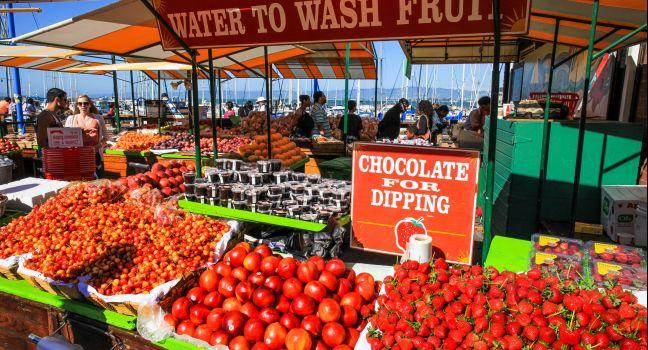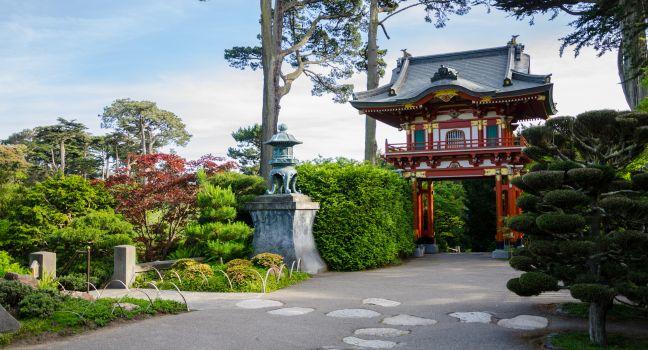Market Street
The street, which bisects the city at an angle, has consistently challenged San Francisco's architects. One of the most intriguing responses sits diagonally across Market Street from the Palace Hotel: the tower of the Hobart Building (No. 582) combines a flat facade and oval sides and is considered one of Willis Polk's best works. East on Market Street is Charles Havens's triangular Flatiron Building (Nos. 540–548), another classic solution. At Bush Street, the Mechanics Monument, in recognition of the Donahue brothers who industrialized the city, holds its own against the skyscrapers that tower over the intersection. This homage to waterfront mechanics, which survived the 1906 earthquake (a famous photograph shows Market Street in ruins around the sculpture), was designed by Douglas Tilden, a noted California sculptor. The plaque in the sidewalk next to the monument marks the spot as the location of the San Francisco Bay shoreline in 1848. Telltale nautical details, such as anchors, ropes, and shells, adorn the gracefully detailed Matson Building (No. 215), built in the 1920s for the shipping line Matson Navigation.






